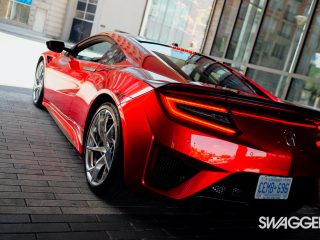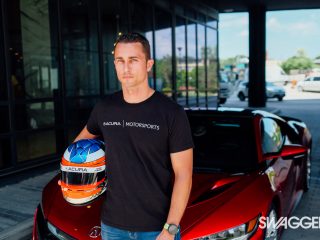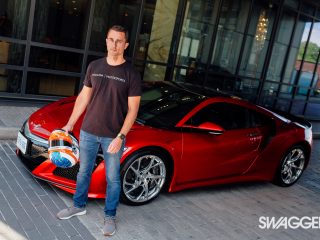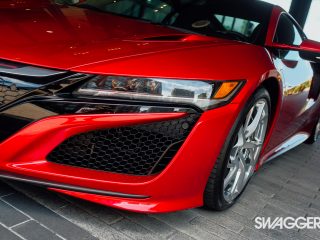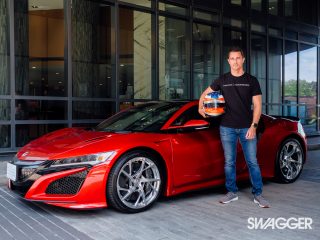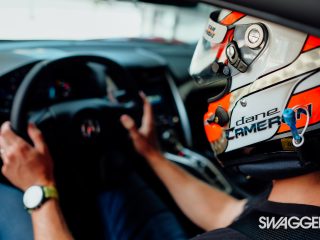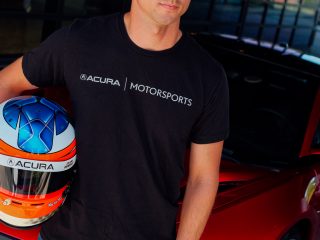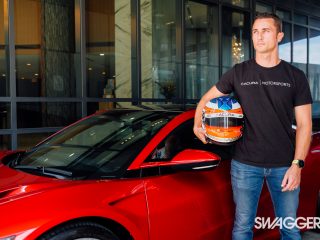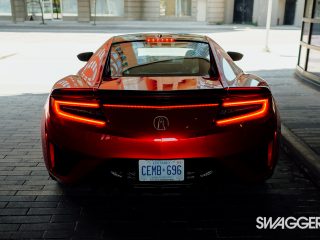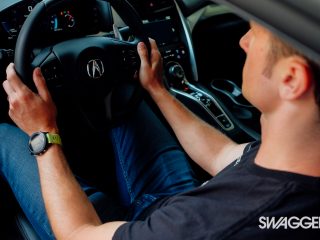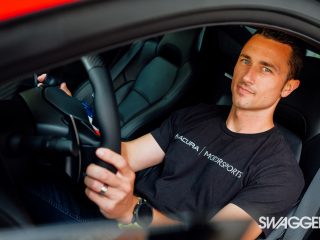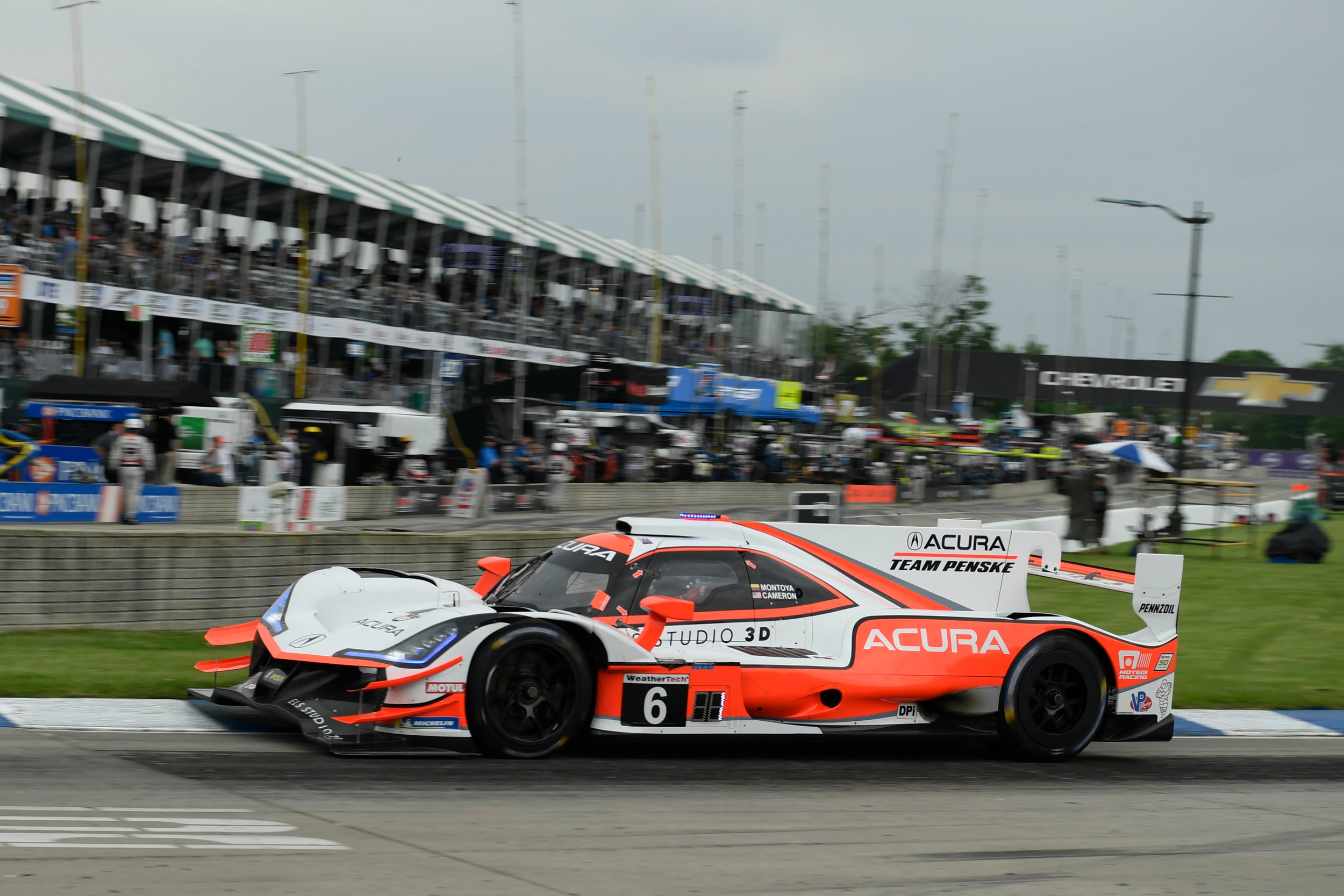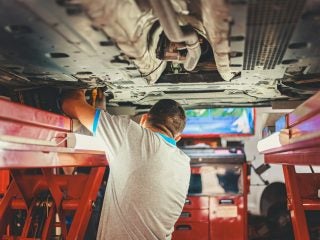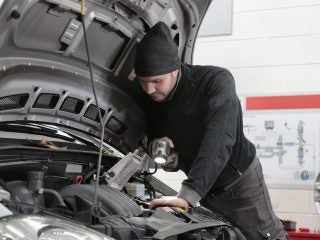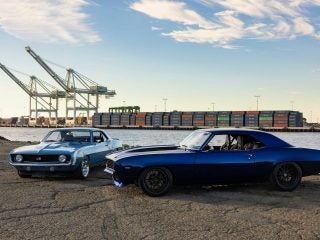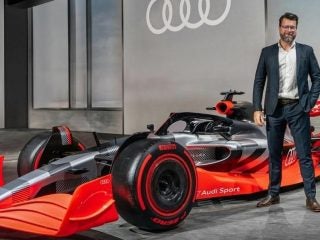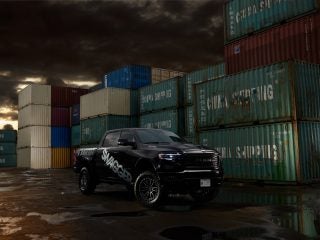Racing is in Dane Cameron’s blood. His father Rick has been a lead engineer in the race world for over 40 years. Like many parents, Cameron’s wanted him to have a plan b if racing didn’t work out, but he always felt that this was it for him, officially joining the motorsport in 2005. He is currently seeking his second IMSA WeatherTech SportsCar Championship Prototype drivers’ title competing in the Acura ARX-05 DPi. He is currently leading the season going into The Mobil 1 SportsCar Grand Prix presented by Acura being held at Canadian Tire Motorsport Park. We had a chance to speak with Dane as he was gearing up for the only Canadian stop in the 12-race series.
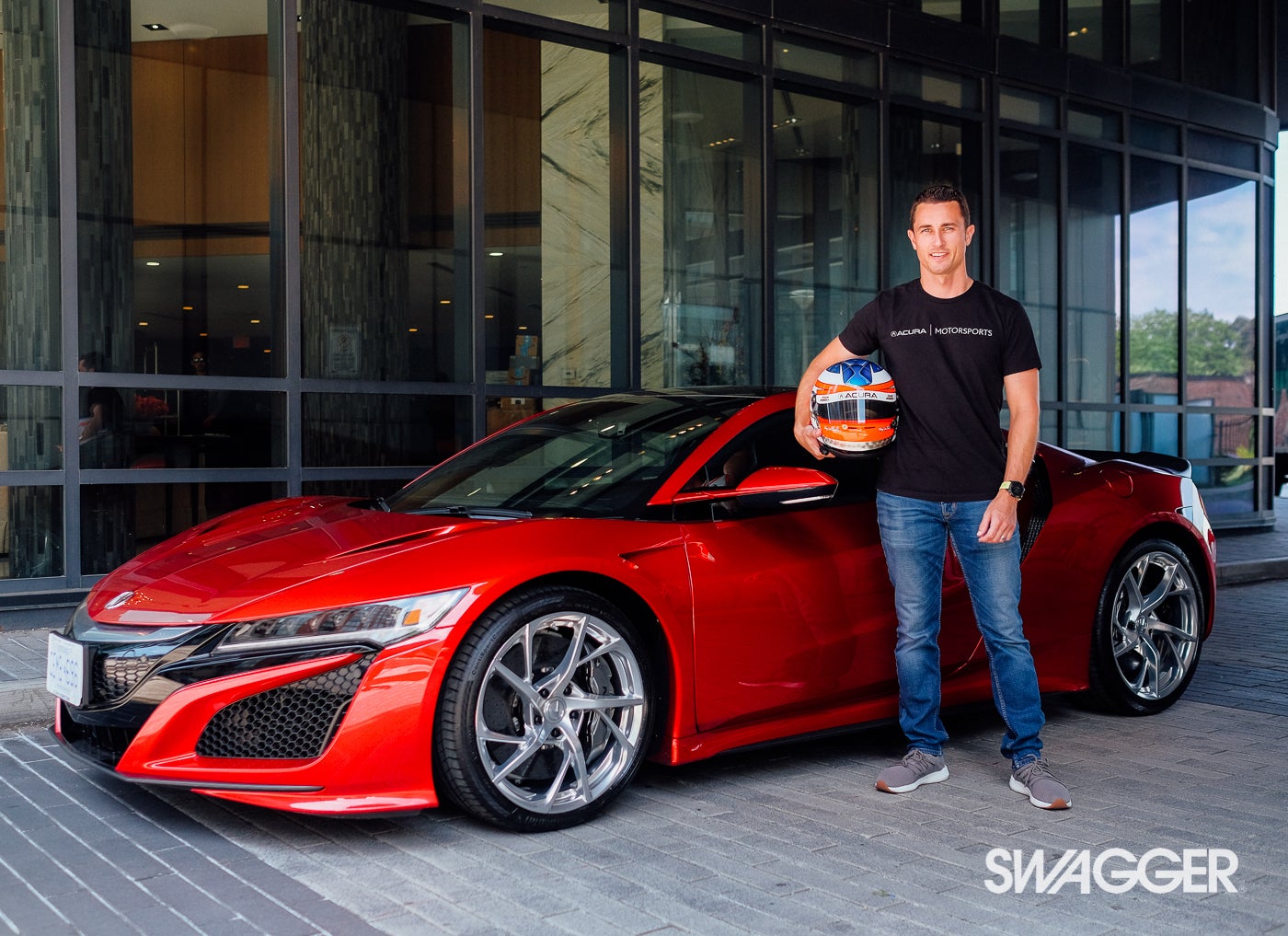
SWAGGER: For the last few seasons, your father, Rick had been the lead engineer for the Spirit of Daytona and is currently with JDC Motorsports which are competitive racing teams. What is it like to compete essentially against your father?
Dane Cameron: It was really funny to be honest. It’s one of those things that you never really think can happen. It is quite normal to change teams frequently [in racing] and I’ve changed categories but it isn’t something that I ever thought would happen. We had raced in the same championship before, but never directly against each other. Then, I signed onto a team in his category and it dawned on us that our job would now be to beat each other. It was different because he was my sounding board and could answer any questions that I had about what to do with the race car even how to handle a situation because he had been in motorsports for so long. All of a sudden, I couldn’t do that anymore and share those secrets or ask him those questions. At the same time, it was cool to think that we had both gotten to the top of our profession. We still have some good fun, give each other a hard time and still beat the other. But if I couldn’t win, I was pleased if he could and vice versa.
SWAGGER: Because of your background in racing, you know more about car set up than the average driver. How do you feel this knowledge gives you an edge on the race track?
DC: Growing up around a race shop and having a family that had a race team gave me a lot of insight that a lot of people wouldn’t have. It was really helpful when I was younger and you drive for the smaller teams with smaller budgets. Sometimes you can also drive on single car teams and you have no teammates or no teammates that are quicker than you, and a lot of the workload falls onto your shoulders. You have to know what to do with the race car and how to improve it. It helped me survive and shine growing to bigger teams and opportunities. I was able to maximize what I needed, make the race car the best it could be and try to get the results I needed to win and get to championship winning teams.
SWAGGER: People often don’t think of all of the physical training involved in being a driver. What is your training like?
DC: I think the thing that is unique for most forms of racing, except maybe the Formula One, is that you are pretty much on your own as a driver to figure it out for yourself. The teams don’t provide trainers to us and your teammates often live somewhere else. I live in North Carolina which is not too far from the shop which may have some facilities, but that’s primarily for the NASCAR drivers. Other members of the team all live in different parts of Florida. Everyone is on their own and expected to show up and be fit.
It takes a little while to figure out, especially when I first came to the type of sportscar racing that I am doing now because the races are quite long. You have to recover and then go again so it takes some trial and error before you figure out what you need to do. Every car is a bit different in terms of the stress it puts on your body and the temperatures in the car can be high (140 degrees). The Canadian Tire Motorsport Track, one of my favourites, is very physical because it’s a fast race track so it’s hard on your neck. This is because of the G-force that we have in the car – it can get up to 4Gs which also puts a strain on your neck.
I try to ramp up through the end of November through December and the first part of January. This is the time when you aren’t driving a lot and it gives you more time in the gym. We then start off the year with the hardest race, which is 24 hours. I spend a lot of time in the gym weight lifting for upper body strength to be able to turn the steering wheel. We do have power-steering but it can catch up to you on some of the harder tracks. I do a lot of shoulders, chest, neck and core. I do a lot of cycling for cardio and it also has a lot of similarities with the heart rate that is in the car. If I can do a 2-3 hour ride at mid-day which is similar to the amount of time and the heart rate that I’ll have in the race car. The heat and humidity in North Carolina makes for a really good training ground. Being able to cope and train in those hot, humid conditions has been helpful.
SWAGGER: All victories are special, and you have had a lot over the years, but is there one that is the most meaningful?
DC: It’s really hard to say because they all mean something different. This year to get a win for Roger Penske was really special. When I won at Detroit, my first overall Prototype victory was amazing because I had spent a season in Prototype and missed out on getting a win so it was great to come back. I had been in Prototype, had some pole positions, then left it and went back to the GT cars but I felt like I had unfinished business in the Prototype category. It was fun to go back and get a win.
SWAGGER: What advice would you give to your sons if they want to get into racing?
DC: I go back and forth, you get the “when you are going to get the go-kart for the kids”? I have been procrastinating because I know it’s a really difficult sport to make a living in. I have seen a lot of people try and fail. I feel very fortunate that I was able to make it and at the same time it would be really special to share that passion with them and go go-karting together. I am putting it off as long as I can to make sure it is something that they really want to do. For advice, it’s going to be that you have to work hard; harder than anybody else. It’s not easy, but if you dedicate yourself to it, give 110% all the time and never give up, anything can happen.
SWAGGER: What do you like to do when you aren’t racing?
When I’m not racing, I’m just consumed by being a Dad. Between catching up on emails, the kids and the training I need to do to prepare be at my best, there doesn’t seem to be a whole lot of time left for much else. I do enjoy cycling – it’s been a fun way to train but also decompress. Other than that, I try to get out on the water, we aren’t far from the lake.
SWAGGER: What’s a story in the racing world that doesn’t get enough coverage?
DC: In general, our type of sportscar racing doesn’t get enough coverage. The IMSA Championship is well known to people who are hard-core racing fans. It’s not as mainstream or popular as it should be. Our series is doing really well right now and growing a lot. I’d like to see our sport become more mainstream and be up there with the NASCARS, Formula 1s and Indy Cars. They have heard about our big races like 24 Hours of Daytona, 24 Hours of Le Mans, but they don’t know that there is this championship that goes along with it. I think our races are hugely exciting because we have 40 cars on track and different classes racing at the same time so there is always something happening. Sometimes Indy and F1 races can get processional because their cars are hard to pass or overtake. That doesn’t happen for us because we are constantly going through these slower GT cars so it’s like trying to get through traffic on the freeway. Once people find out about our type of racing, they enjoy it and become a fan. I hope over the next few years, that we can grow. We have a lot of the big name guys come and do our races, and the calibre of cars this year is every bit as good as every other championship.
SWAGGER: What’s next for you?
DC: I’m really happy to be in IMSA and to be in the top class in Prototype. The focus is to finish off this season as strong as we can. We have four races left in this championship and we just took the lead. I’m really hopeful that we can deliver this championship – it would by my third in IMSA so I’m pushing really hard to get that one. From that, you turn the page and go to the next season.
Credits:
Photographer & Creative Director: Steven Branco for SWAGGER Magazine
Production Assistants: Jill Schneiderman, Ayman Hbeichi
Talent: Dane Cameron
IGTV Video: Anastasiya Romanka




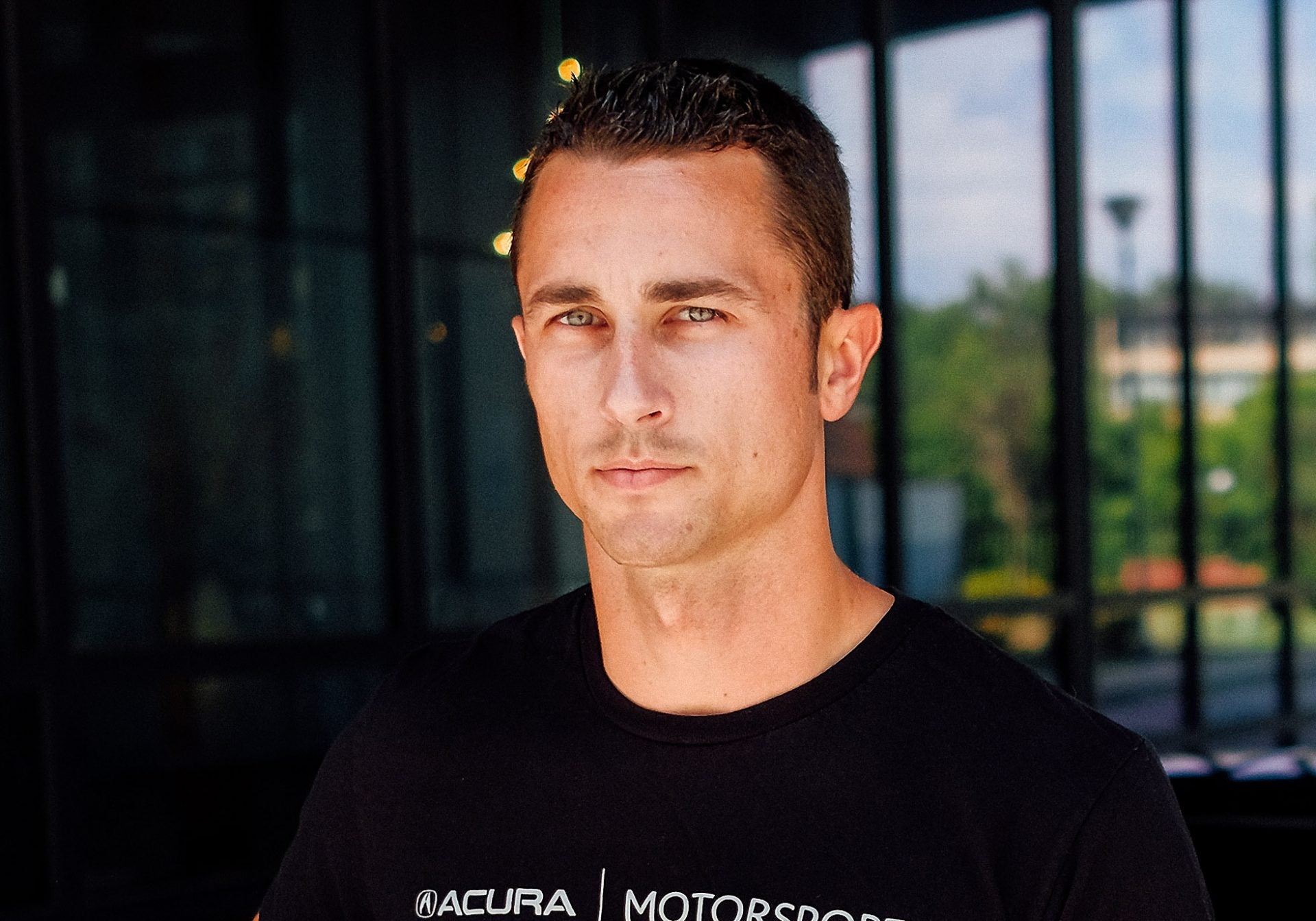
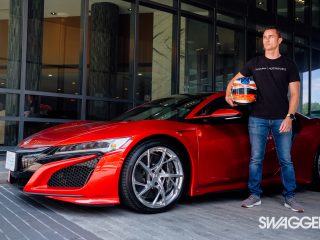
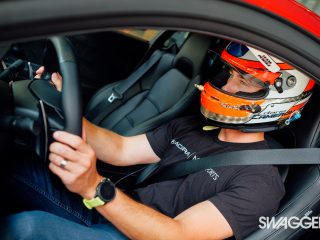
![Acura NSX Dane Cameron IMSA Racing Champion - SWAGGER="90345,90341,90337" orderby="rand"]](https://www.swaggermagazine.com/home/wp-content/uploads/2019/07/DSCF6672-320x240.jpg)
